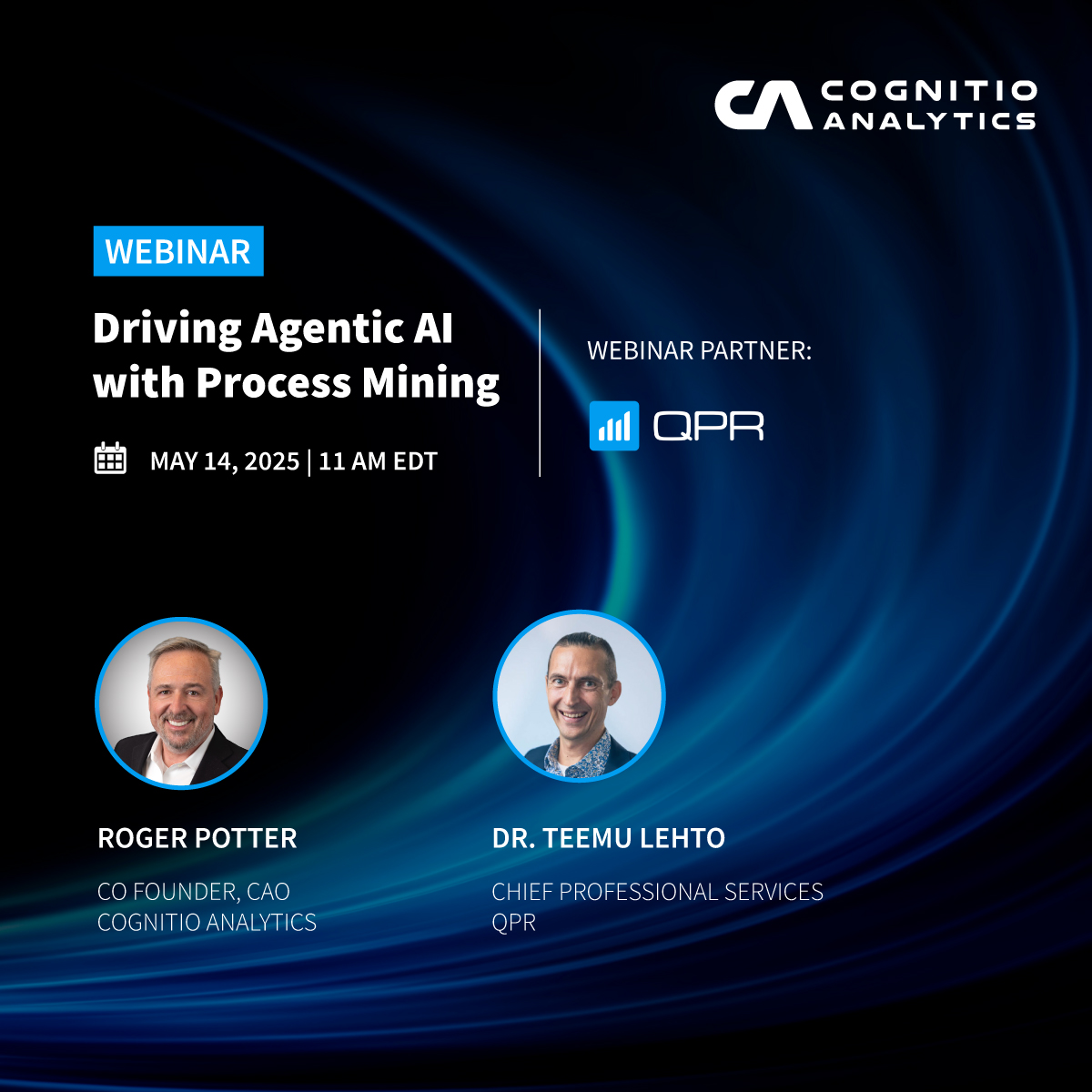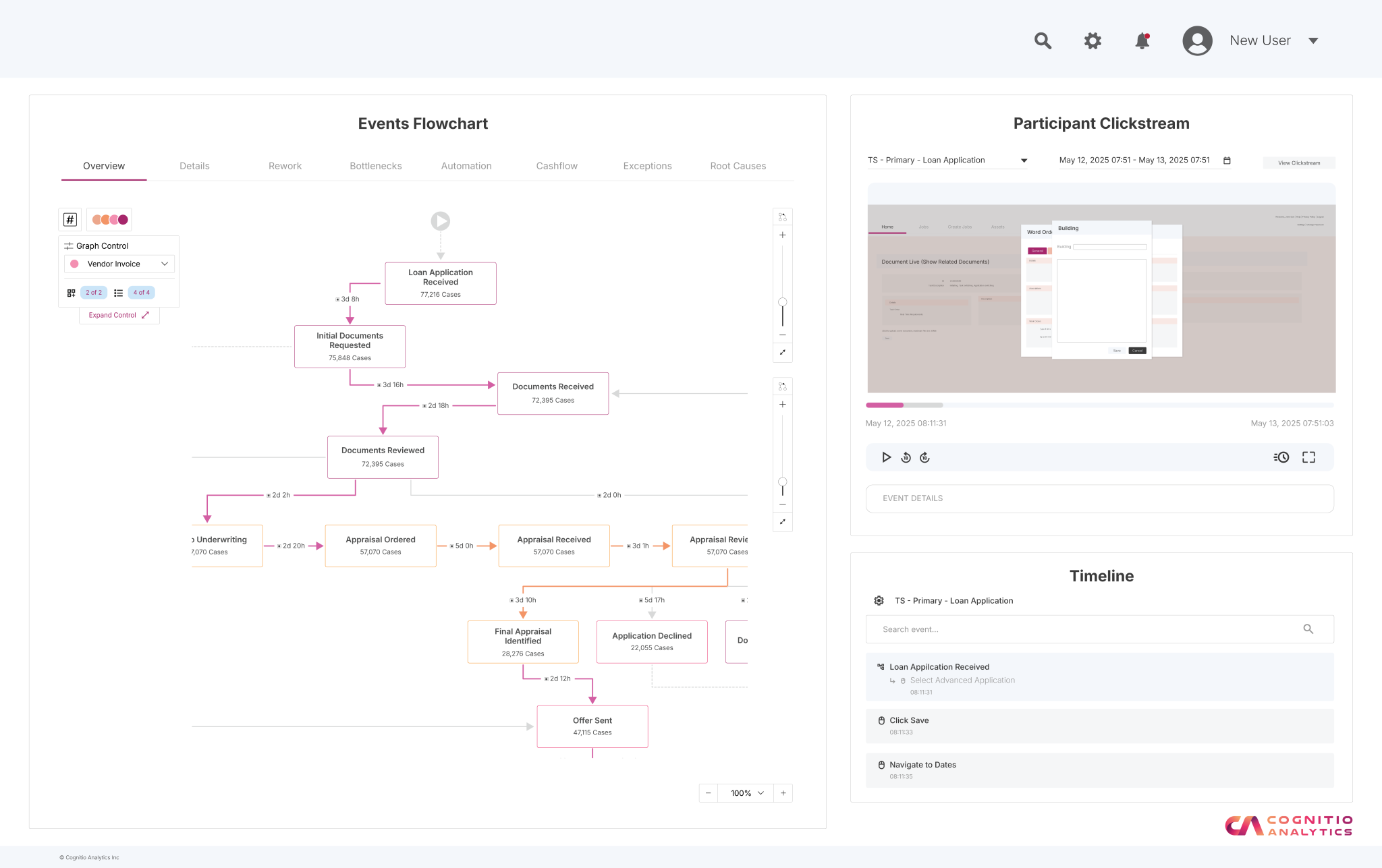
Task Mining: The Hidden Layer of Transformation
- Published Date: August 8, 2025
In the pursuit of operational excellence and digital transformation, businesses often analyze high-level processes. Yet, a crucial layer of insight lies hidden within the day-to-day activities of individual users; the clicks, keystrokes, and application interactions that truly define how work gets done. This is the realm of task mining, a powerful capability that provides unparalleled granularity, enabling profound improvements and intelligent automation.
What is Task Mining? How Does it Work?
Task mining is a technology that captures and analyzes user interactions at the desktop level to understand how tasks are performed within a larger business process. Unlike process mining, which typically analyzes system-generated event logs for an end-to-end view of processes, task mining zooms in on the human element, observing desktop activities like mouse clicks, keystrokes, data entries, and time spent in various applications.
Here’s how it generally works:
- Data Collection: Lightweight software agents or recorders are installed on user devices, operating in the background to log detailed interactions with applications. This data can include screen recordings, timestamps, and contextual information.
- Context Recognition & Task Identification: Using technologies like Optical Character Recognition (OCR), Natural Language Processing (NLP), and machine learning, the collected data is interpreted to understand the context of user actions. This allows the system to identify and group sequential actions into discrete tasks (e.g., “processing an invoice” or “updating customer details”).
- Pattern Recognition & Analysis: Advanced algorithms analyze these task patterns to identify repetitions, variations, inefficiencies, and bottlenecks. They can quantify processing times for specific steps, reveal manual rework, and uncover non-standardized activities.
- Recommendations & Visualization: The insights are often visualized through detailed process maps, flowcharts, or timelines, providing a clear picture of task execution. Based on this analysis, task mining tools generate recommendations for process improvements and automation opportunities.
The Granular Power: Insights Across All Systems
Task mining offers significant task mining benefits by capturing desktop-level user activities. This provides granular insights across all systems, even those not directly integrated at a backend level. It reveals the true “as-is” state of work, including:
- Inter-application Navigation: How users switch between different software applications (e.g., CRM, ERP, spreadsheets, email) to complete a single task.
- Manual Data Entry & Rework: Pinpointing instances of repetitive data entry, copy-pasting, or corrections due to errors, which are often hidden from system-level logs.
- Variations in Task Execution: Identifying different paths employees take to achieve the same outcome, highlighting best practices and areas for standardization.
This level of detail enables the clear quantification of processing times for each step within a task, providing accurate metrics for average handle time, variations, and identifying where time and resources are truly spent.
A Foundation for Automation Strategy, Including Agentic AI
One of the most compelling task mining use cases is its ability to provide a robust foundation for developing an automation strategy, including the increasingly sophisticated realm of agentic AI. By identifying repetitive, rule-based, and time-consuming tasks at the micro-level, task mining helps organizations:
- Prioritize RPA Candidates: It precisely highlights which tasks are ideal for Robotic Process Automation (RPA), where bots can replicate human actions on a desktop.
- Inform Intelligent Automation: Beyond RPA, it informs decisions for more advanced intelligent automation, including technologies like Intelligent Document Processing (IDP) or Generative AI (GenAI) for dynamic content creation.
- Prepare for Agentic AI: As agentic AI evolves to autonomously execute multi-step processes requiring reasoning and adaptability, the high-fidelity process data generated by task mining becomes critical. It provides detailed context and variations needed to train, validate, and govern these autonomous systems, ensuring they operate effectively and align with business goals.

Rethink Automation: Build the Foundation for Agentic AI
Discover how forward-looking CXOs are using process intelligence to pave the way for scalable, autonomous AI. This on-demand webinar breaks down the shift from rule-based automation to dynamic, agentic systems.
Improving Accuracy and Speed of Transformation Programs
Task mining dramatically improves the accuracy and speed of a transformation program by replacing traditional, often slow and incomplete, discovery methods like interviews and workshops with objective, real-world data.
- Accelerated Discovery: It rapidly uncovers process inefficiencies and automation opportunities that might otherwise go unnoticed, significantly cutting down the discovery phase of a transformation project.
- Higher Accuracy: By capturing actual user behavior, it provides a 100% accurate view of workflows, ensuring that transformation efforts are based on facts, not assumptions or anecdotal evidence. This precision leads to more effective process redesign and automation.
- Measurable ROI: The detailed metrics on processing times, inefficiencies, and automation potential directly contribute to a quantifiable task mining return on investment. Businesses can build stronger business cases for change by clearly demonstrating the potential savings and productivity gains.
- Continuous Improvement: Task mining tools can continuously monitor conformance and productivity metrics, allowing organizations to track the impact of their transformation initiatives and make ongoing, data-driven adjustments for continuous improvement.
For Cognitio Analytics, leveraging task mining means moving beyond assumptions to a precise, data-driven understanding of how work truly happens. It’s about uncovering the hidden inefficiencies, empowering strategic automation decisions, and accelerating the journey toward a more efficient, agile, and intelligent enterprise.
From Clicks to Clarity:
See How Work Actually Gets Done
Modern transformation starts by seeing work for what it truly is—not what we assume it to be. Our task mining solutions capture real-user interaction data and turn it into deep, actionable insights, exposing hidden inefficiencies, repetitive actions, and automation-ready opportunities across all systems.
- Pinpoint where your teams are spending time.
- Prioritize high-impact automation candidates.
- Accelerate transformation with confidence.
Improving Accuracy and Speed of Transformation Programs
Task mining dramatically improves the accuracy and speed of a transformation program by replacing traditional, often slow and incomplete, discovery methods like interviews and workshops with objective, real-world data.
- Accelerated Discovery: It rapidly uncovers process inefficiencies and automation opportunities that might otherwise go unnoticed, significantly cutting down the discovery phase of a transformation project.
- Higher Accuracy: By capturing actual user behavior, it provides a 100% accurate view of workflows, ensuring that transformation efforts are based on facts, not assumptions or anecdotal evidence. This precision leads to more effective process redesign and automation.
- Measurable ROI: The detailed metrics on processing times, inefficiencies, and automation potential directly contribute to a quantifiable task mining return on investment. Businesses can build stronger business cases for change by clearly demonstrating the potential savings and productivity gains.
- Continuous Improvement: Task mining tools can continuously monitor conformance and productivity metrics, allowing organizations to track the impact of their transformation initiatives and make ongoing, data-driven adjustments for continuous improvement.
For Cognitio Analytics, leveraging task mining means moving beyond assumptions to a precise, data-driven understanding of how work truly happens. It’s about uncovering the hidden inefficiencies, empowering strategic automation decisions, and accelerating the journey toward a more efficient, agile, and intelligent enterprise.
Explore the Latest
Discover trends and strategies shaping smarter, faster business processes.




